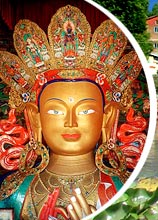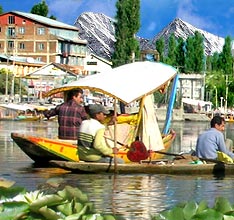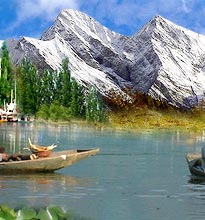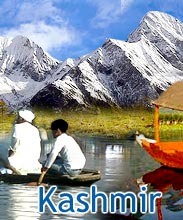The village of Sani is situated as a distance of
approximately 6 km to the west of the Padum valley, on the road to
Kargil. The major tourist attraction of Sani in Ladakh is its monastery.
The castle like monastery is built on level ground, unlike any other
monastery of this area. Sani monastery has a legend attached to it,
which goes that its initial foundation is associated with Kanishka. The
reason behind the legend is the existence of Kanika Stupa in the
backyard of the walled complex.
There is a huge multi-columned central prayer hall in the main building
of the monastery. This hall consists of a rich collection of the statues
of popular Buddhists divinities as well as the Drugpa (Old Schools) high
saints. There is a chapel behind the main building, adorned with some of
the most exquisite stucco friezes. These friezes exhibit landscapes and
floral designs based on the life of Padmasambhava. Also near the
monastery is an old cemetery, encircled with some ancient rock carving
with an Indian influence.
Sani is also famous because of the connection of this place with
Naropa, the Indian yogi from Vikramsila. It is said that he sat under
the Kanika Stupa for meditation purposes. The site where he meditated
now houses a small room consisting of a veiled bronze figure of the Yogi
himself. This statue is unveiled only once a year, in late July. At the
time of the unveiling, a festival is held here, which lasts for two
days. In this festival, Bardan Monastery monks perform masked dances as
a part of the ritual offering.

    |




